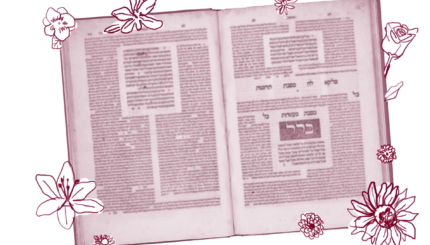Yesterday, we read the story of Dama ben Natina, a non-Jew from whom the sages purchased a red heifer for use in the Temple, and we considered how its appearance in the second chapter of Avodah Zarah undermines the opening mishnah of the chapter that states non-Jews are suspected of practicing bestiality.
The tale of Dama ben Natina also appears on Kiddushin 31a where it is part of a discussion about children’s obligations to their parents. A central element of the story is Dama’s refusal to wake his father from a nap, even at the cost of losing a considerable profit. In Kiddushin, Dama is held up as an exemplar of how honoring one’s parents is ultimately rewarded — in his case, with a lucrative red heifer born to his herd the following year. This gives the story a happy ending as Dama is able to recover the income that he lost by letting his father sleep. That he chooses not to gouge the Jews and sell the red heifer for an even larger profit adds to his legacy as a moral exemplar.
It is possible, as Rabbi Lexie Botzum suggested yesterday, that by importing Dama’s story to Avodah Zarah, the rabbis meant to implicitly challenge the negative view of non-Jews in the mishnah. But as the conversation continues on today’s daf, a beraita is cited that pushes the conversation back to where it began:
But isn’t it taught in a beraita that they said to Rabbi Eliezer: There was an incident in which Jews purchased the red heifer from a gentile, and Dama was his name. Rabbi Eliezer said to them: Can one bring a proof from there? Certainly not, as Jews were safeguarding it from the time that it was born.
In an effort to convince Rabbi Eliezer that it is permitted to buy animals from non-Jews for ritual purposes, a group of his peers reminds him of the story of Dama, an obviously righteous gentile. But Rabbi Eliezer dismisses their argument. The sages, he suggests, bought the heifer from Dama not because he was free from suspicion, but rather because they had been supervising the animal since birth. Even Dama’s exemplary behavior does not exempt him from the suspicions that fall on all non-Jews.
The rabbis who formulated the Mishnah lived through the destruction of the Temple and subsequent generations of Roman oppression. It is understandable that they included texts that reflect an inherent fear of neighbors who did not share their faith. Still, these are challenging texts. The Talmud’s treatment of Dama ben Natina in Avodah Zarah tarnishes his reputation, so well burnished in Kiddushin.
We are under no obligation to give the current tractate the final word. Instead, we can choose to give primacy to the telling of Dama’s story in Kiddushin, in which he is given the spotlight rather than being banished to the shadows. Doing so does not make the difficult passages of Avodah Zarah any easier to read, but it reminds us that they are not the only perspective the Talmud has to offer about the character of non-Jews and how we ought to relate to them.
Read all of Avodah Zarah 24 on Sefaria.
This piece originally appeared in a My Jewish Learning Daf Yomi email newsletter sent on July 12, 2025. If you are interested in receiving the newsletter, sign up here.
With your help, My Jewish Learning can provide endless opportunities for learning, connection and discovery.



